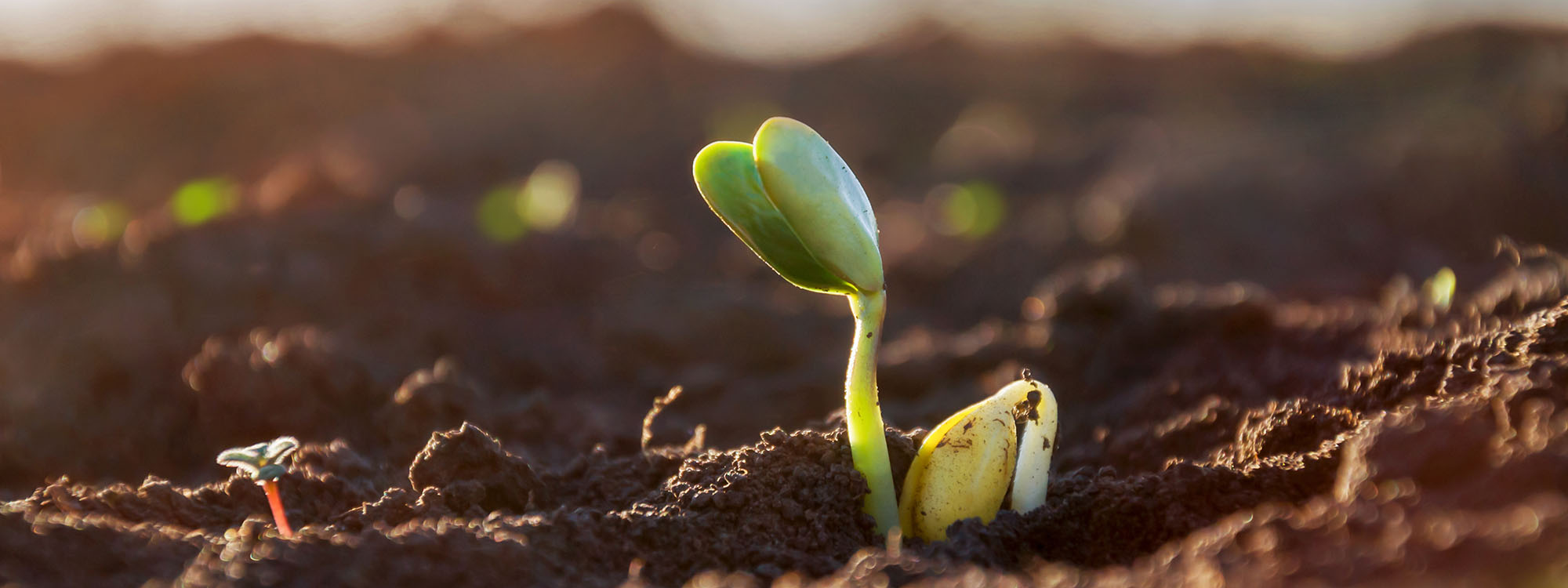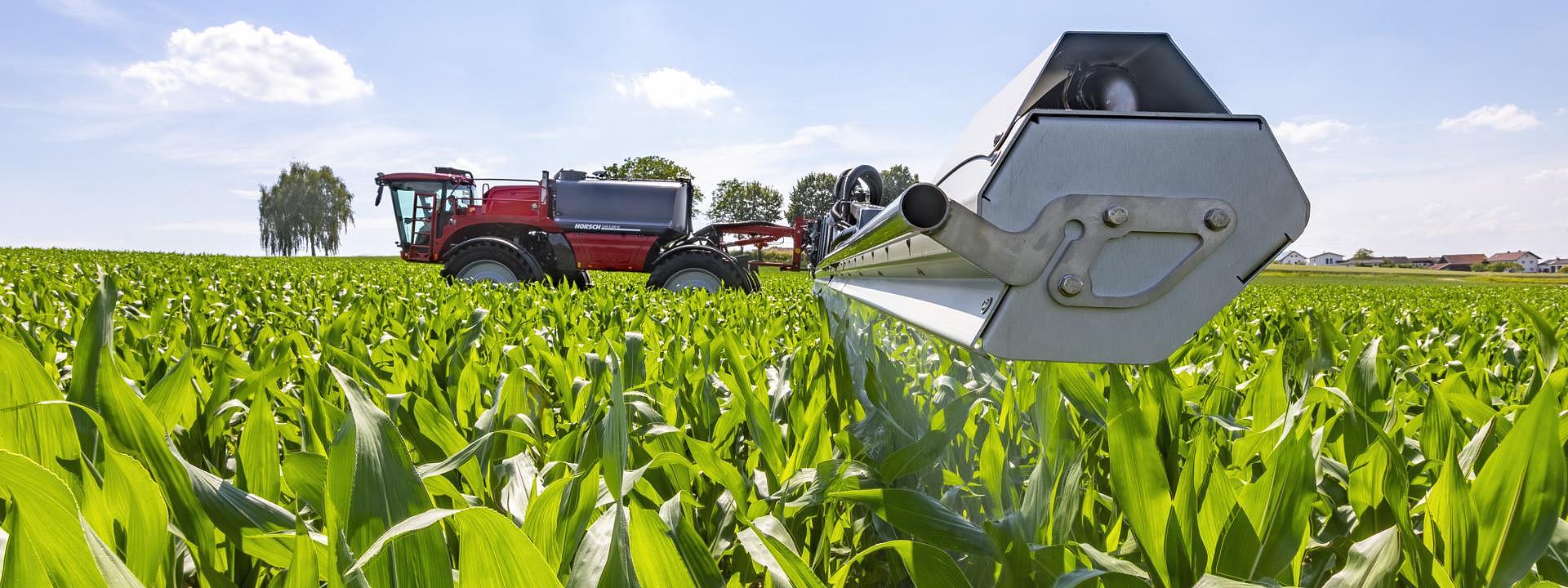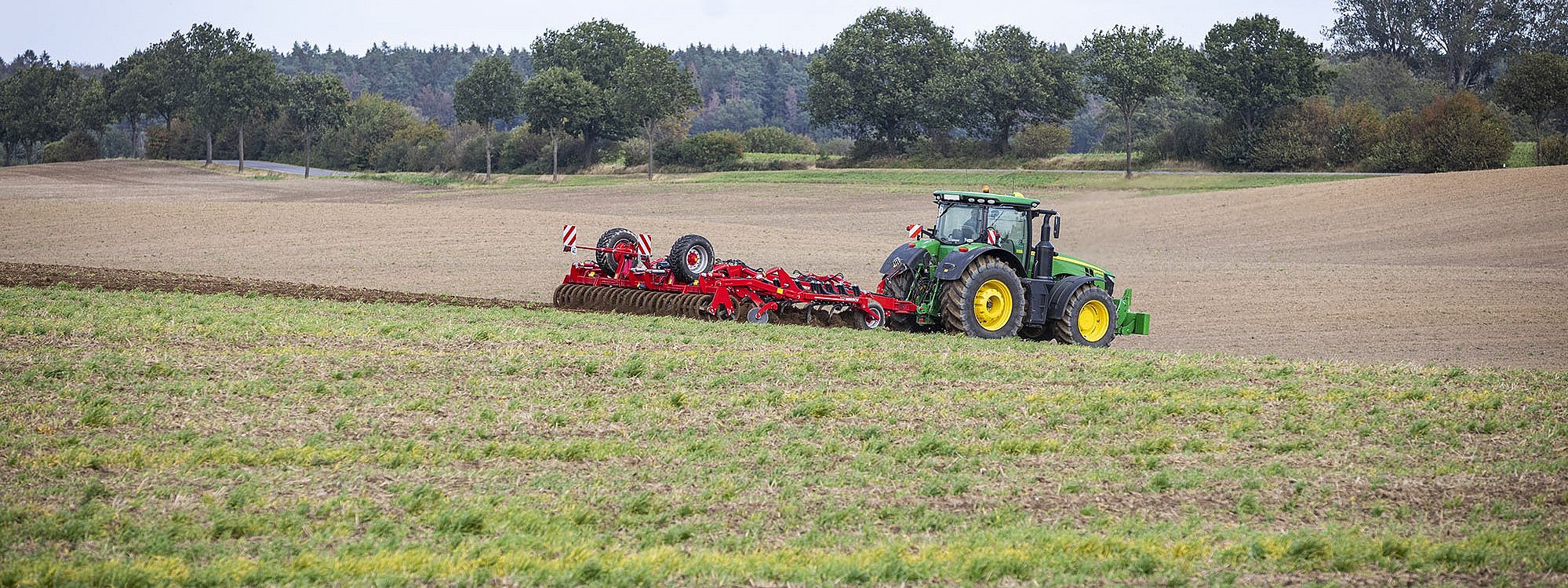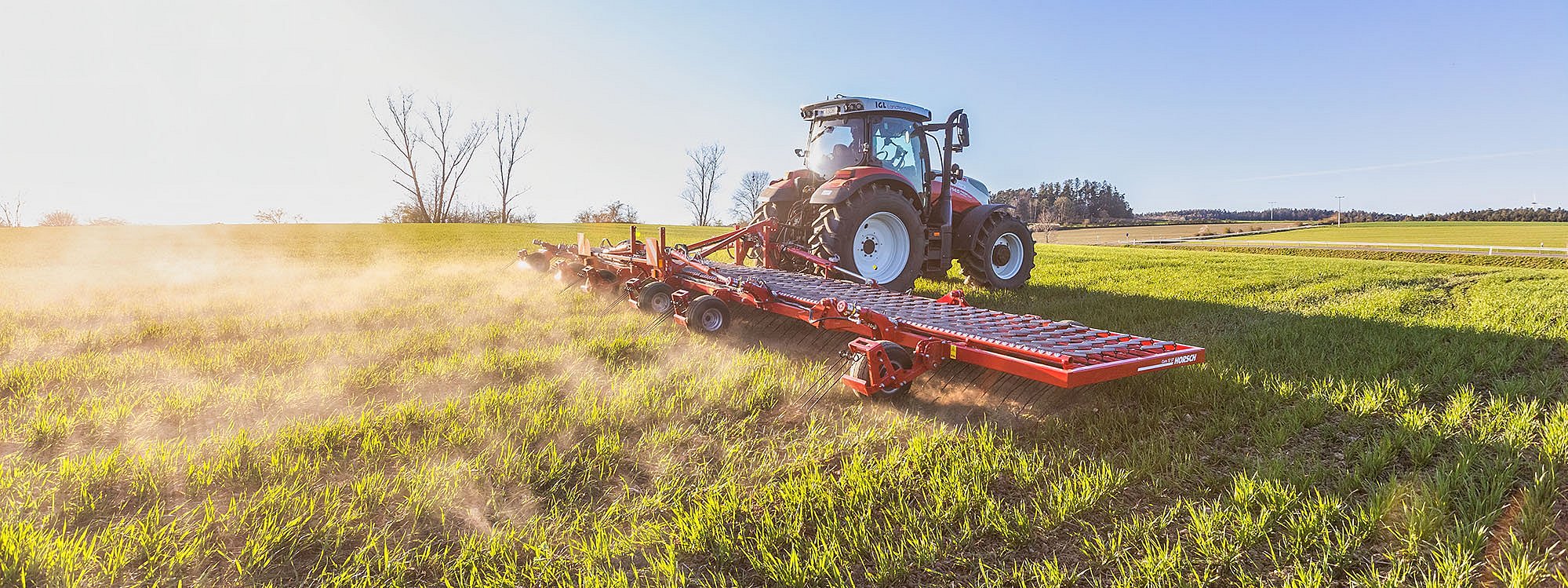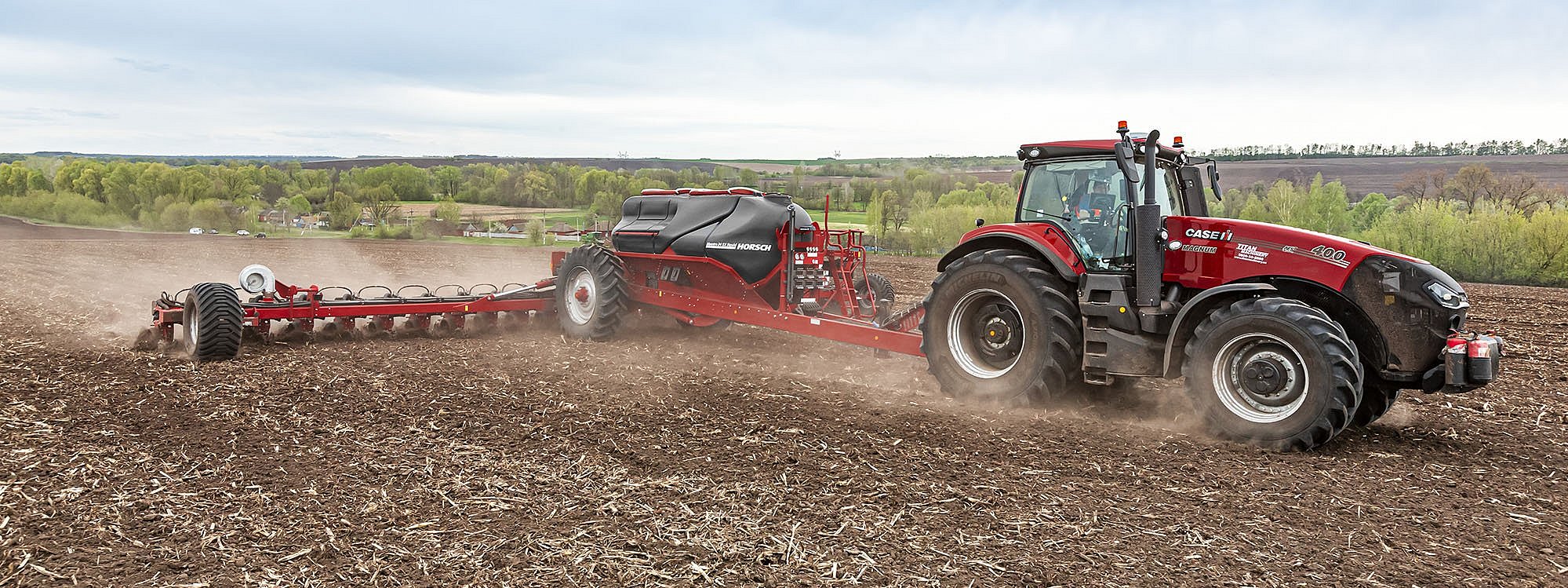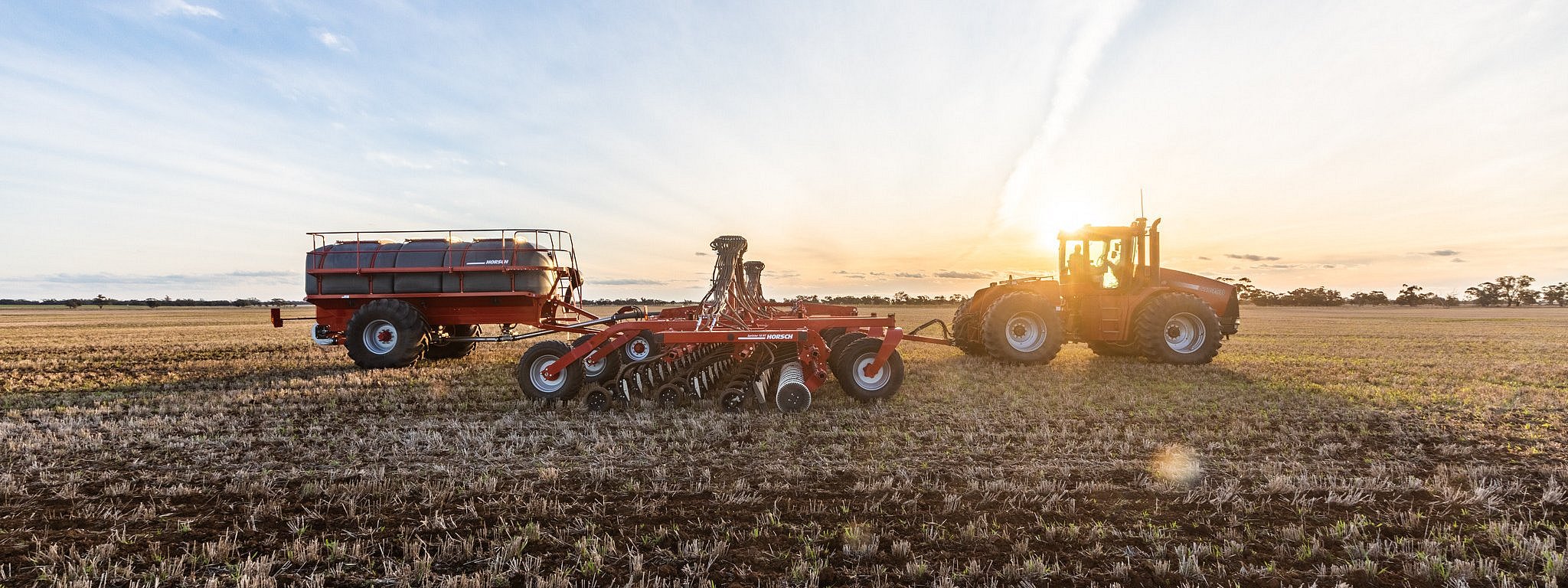Comparatively warm autumn – what are the consequences for the crops?
For a balanced population architecture and optimum conditions of the crop in spring, the course is already set in autumn. Every crop should reach and/or not exceed certain development stages to create the necessary prerequisites for the vegetation start in spring. A crucial influencing factor is: the weather that this year involved quite some challenges.
This is the reason why we want to deal with the consequences for our crops in the field and answer the question how the respective crop should optimally start into the winter.
But first, let’s look back on this year’s autumn:
Despite the cold snap in November, this year’s autumn is classified as the second warmest since the temperature recordings. The average temperature amounted to 11.5 °C.
September was very dry with regional heavy rainfall events.
October and especially the wet November brought abundant rainfall in Germany.
However in total, there was a lot of sunshine especially at the beginning of autumn so that the sunshine duration exceeded the target of 311 hours by approx. one fourth.
However in total, there was a lot of sunshine especially at the beginning of autumn so that the sunshine duration exceeded the target of 311 hours by approx. one fourth.
All these factors, of course, influence the development of the crop in the field. But before we deal with the consequences on the crops, we will answer this question:
How should the plants start into the winter to prevent winter damage?
Therefore, we take a closer look at the winter crops rapeseed, wheat and barley.
Rapeseed
The rapeseed plants should have reached the 10- to 12-leaf stage and form a flat, lying rosette. Moreover, a deep reaching tap root with a root diameter of 0.8 bis 1 cm should be achieved. Very weak populations are particularly prone to winter damage and also those that have overgrown significantly and where the vegetation cone that is liable to frost protrudes too far from the soil.
Wheat
In this case, too, the development stage of the plants is essential for resistance. Until and from the 3-leaf stage, wheat populations are very resistant to frost and thus, start optimally into the winter. However, in the 3-leaf stage, the plant changes from grain to root nutrition and therefore is considerably more sensitive. The plants, thus, regenerate worse after frost. On principle, a good cold hardiness also applies to tillered plants as their regenerative capacity is excellent due to their nutrient reserves. Another advantage of tillering before the winter: the shoots that are formed in winter provide significantly more yield and are considerably more resistant than shoots that are formed in spring.
Barley
For barley, it is considerably more significant and more relevant for the yield to reach a certain minimum target population density than for wheat. The shoots that are formed in spring provide considerably higher yields. Therefore, it would be optimal to achieve a good pre-winter development with a tillering of max. ES 25. An overgrowing of the population, however, leads to an increased disease infestation and as a result the risk of winter damage increases.
Summary:
Winter damage can basically be reduced by vital plants that are more resistant and better protected against frost action.
After a sufficient inurement stage, rapeseed and winter wheat endure black frost of -15 to -20 °C as well as winter barley endures temperatures from -12 to -15 °C. The further developed a plant is, the lower are these tolerances. Black frost in March for example is more damaging to yield than in winter.
Consequences of the warm autumn
In general, for all early sown crops, a warm autumn involves the risk of overgrowing before winter. The danger of cold hardiness and, thus, of winter damage of the crop increases.
Moreover, warm temperatures are problematic for the health of the plants. The warm-wet weather favours infections and the spreading of illnesses as well as of virus-transmitting insects.
Another essential aspect are weeds. On the one hand, warm temperatures mean a longer emergence phase and on the other hand, a further development of already emerged weeds. This complicates weed management considerably. Moreover, with regard to their herbicide strategy for cereals, some farmers rely on a treatment in spring and, therefore, do not treat the population in autumn. However, if the weeds are already relatively large at that time, the effect is not sufficient.
The method to reduce black grass – postponing the seed time towards cooler soil temperatures – partly was not successful. For the required low soil temperatures of max. 6 – 8 °C were exceeded for a long time so that black grass emerged massively despite the later seeding date.
In addition to the general consequences, we will also regard the consequences of the warm and rainy autumn for the respective crops. We will take a closer look at the pre-winter development of rapeseed, wheat and barley:
Rapeseed
Already rapeseed seeding proved to be problematic. At first, constant rainfall did not only complicate the cereal harvest, but also the preparation of the fields for seeding rapeseed. Seeding was only possible before or after an adverse weather period at the end of August. A dry period followed so that the emergence of rapeseed was delayed. In addition to resp. because of the problematic weather, a bad seedbed and slugs also added to an irregular emergence with a lot of gaps. There also were problems with regard to the effect of the herbicide: drought and the insufficient seedbed resulted in a bad effect of the soil herbicides so that leaf agents which noticeably weaken the plants had to be used. The result of all these problems was that the populations had to be resown in some regions.
This causes the following problem: rapeseed needs approx. 800 – 900 °C-days from seeding to the end of the year to be sufficiently developed to start into the winter. Until the end of the vegetation, winter rapeseed, therefore, normally requires 100 to 110 vegetation days. Because of the late emergence and relatively early dormancy in mid-November there are fewer vegetation days, and the rapeseed loses valuable time so that it possibly cannot achieve the required temperature sum until the end of the year. This risk was due to the delayed, irregular emergence and the reseeding of some populations.
Due to the warm autumn, the rapeseed population developed very well and especially quickly – almost too well – despite the delayed emergence and the early dormancy. The risk of overgrowing and of the stretching of the axis of the shoot was enormous. The farmers were often forced to shorten their populations. The objective of this fungicide measure is the shortening of the shoot and the prevention of overgrowing. Other positive consequences of the measure are the fighting of cylindrosporium, the elimination of the competition between leaf formation and formation of the leaf axil buds, the reduction of the water content in the plant for an improved frost resistance and the increased formation of root and root hairs.
Wheat
In general, the warmer temperatures were no problem for the wheat itself and its development.
However, because of the late seeding date for wheat, wheat seeding often „started“ on time at the beginning of the adverse weather period. Partly, the conditions were too wet for seeding. Accordingly, the populations developed badly because of compactions while seeding and dammed-up water. It was not possible to seed the majority of the planned wheat fields until the start of dormancy.
Farmers are now looking for alternatives also for the bad populations that have to be turned. A possible alternative is the cultivation of spring wheat, spring/autumn barley, field beans, peas, maize, sunflowers or soya. The latter allows for cultivating an at least somewhat profitable crop in fields that remain wet for quite some time in spring. However, in fields you can drive on earlier, spring wheat and spring barley are a good solution. To achieve highest possible yields, they should be sown as early as possible or even still in winter (autumn barley).
Barley
For barley – similar to rapeseed, the main problem is the risk of overgrowing. If the plants are too large, winter damage will be enormous. In addition, the risk of potential diseases and the use of powerful fungicides in early spring increases.
Summary:
The higher temperatures in autumn involve an increased plant protection agent demand in autumn and probably also in spring: shortening of the rapeseed, increased occurrence and thus fighting of diseases, fighting of weeds etc.
Outlook offset method
If you regard the weather with its temperatures and rainfall, it becomes evident that we more and more will have to deal with extreme weather conditions. Long droughts are followed by long periods of rain and vice versa. The more extreme the conditions are, the more important is the selection and the co-ordination of tillage and seeding technology. This year, too, this was the alpha and omega for an even emergence and a good population development.
Especially in years with extreme conditions, the offset method is a good solution:
The offset method is the separation of seedbed preparation and seeding. The offset method (seeding technology without integrated front tools) allows for separately determining the timing of the preparatory work and to individually react to very wet or extremely dry conditions by choosing the appropriate seedbed preparation technology, e.g. HORSCH Joker, HORSCH Cruiser.
Due to the separation, a longer drying of the soils after rainfall and, thus, a longer seeding window in wet conditions are achieved. “There always is some time leeway with regard to tillage. For seeding, the ideal moment of time is crucial.“
The HORSCH Serto or the HORSCH Taro SL for example can be used for this method. Due to their low horsepower requirement with regard to the following, more flexible seeding with regard to the time frame, they allow for using less powerful tractors.
